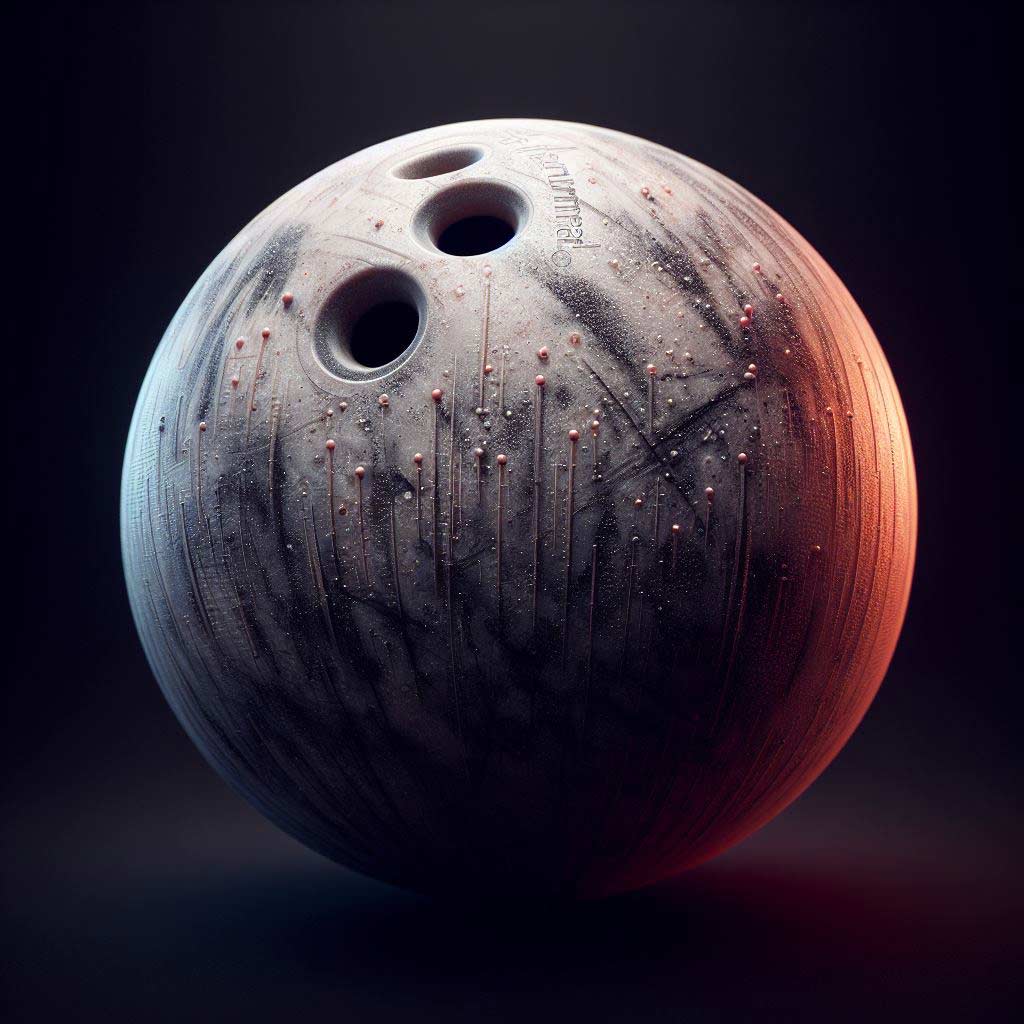Have you ever watched in awe as a professional bowler sends a powerful bowling ball hurtling down the lane, gracefully arching and hitting the pocket with explosive force?
Chances are, that ball was a raw hammer reactive resin bowling ball. Known for their unparalleled hooking potential and stellar performance on heavy oil patterns, raw hammer balls have become a staple in the arsenals of elite bowlers worldwide.
In this ultimate guide, we’ll dive deep into the world of raw hammer bowling balls, exploring their construction, benefits, selection criteria, drilling considerations, and essential care and maintenance techniques. Get ready to unlock a new level of bowling mastery!
Understanding Raw Hammer Bowling Ball Construction
At the heart of every raw hammer bowling ball lies a meticulously engineered combination of cutting-edge materials and advanced technologies.
These balls are crafted using reactive resin coverstocks, which feature a porous surface that allows the coverstock to absorb and expel lane oil more efficiently. This unique property is what gives raw hammer balls their signature hooking motion and impressive back-end reaction.
Materials Used
The coverstock is just one part of the equation. Raw hammer balls also feature high-performance cores, typically made from dense materials like polyester or wood.
These cores are carefully designed with specific weight blocks, radiuses, and differential ratings to create the desired ball motion and dynamics.
Premium brands like Hammer, Motiv, and Storm employ proprietary core technologies to fine-tune the performance characteristics of their raw hammer offerings.
Reactive Resin Technology
Reactive resin technology is the cornerstone of raw hammer bowling balls. This advanced coverstock material is engineered to interact with lane oil in a highly responsive manner, enabling the ball to create more friction and generate a powerful backend hook.
As the ball transitions from the oiled heads to the drier backend, the reactive resin coverstock grips the lane, resulting in an explosive backend motion that elite bowlers crave.
Different Core Designs and Their Impacts
Not all cores are created equal. Raw hammer balls can feature various core designs, each tailored to suit different bowling styles and preferences.
Symmetric cores tend to offer a more predictable and controllable motion, while asymmetric cores create a more angular and aggressive backend reaction.
Low-differential cores promote a smoother, more arcing motion, while high-differential cores amplify the backend hook potential. Understanding these core nuances is crucial when selecting the right raw hammer ball for your game.
Factory Finish/Polish Levels
Fresh out of the box, raw hammer bowling balls typically feature a rougher, more porous surface finish. This factory finish, often labeled with grit numbers like 500, 1000, or 2000, determines the ball’s initial traction and hooking potential.
Lower grit numbers indicate a rougher surface, optimized for heavy oil conditions, while higher grit numbers represent a smoother, more polished finish better suited for drier lanes.
Adjusting the surface finish through sanding or polishing is a common practice among bowlers to fine-tune the ball’s reaction to specific lane conditions.
Benefits of Using a Raw Hammer Ball
While raw hammer bowling balls may require a bit more skill and finesse to control, their performance advantages are undeniable. Here are some of the key benefits of incorporating a raw hammer ball into your arsenal:
Increased Hooking Potential
The reactive resin coverstock and specialized core designs of raw hammer balls are specifically engineered to create a powerful backend hook. This hooking motion not only generates more strike potential but also helps bowlers handle challenging lane conditions that might otherwise deflect or over-hook a less aggressive ball.
Better Control on Heavy Oil Patterns
Heavy oil patterns, commonly found in tournament and competitive settings, can be a nightmare for bowlers using more traditional bowling ball materials.
Raw hammer balls excel in these conditions, as their reactive coverstocks are designed to absorb and channel the excess oil, allowing the ball to maintain a predictable and controllable motion.
Longer Lasting Reaction
One of the unique advantages of raw hammer balls is their ability to maintain their reaction over extended use. Unlike some other ball materials that can become “lane-shined” or lose their traction after repeated games, raw hammer balls retain their aggressive hooking motion for longer, providing consistent performance throughout a tournament or long bowling session.
Customization Options (Surface Adjustments)
Raw hammer balls offer bowlers a high degree of customization through surface adjustments. By altering the surface texture and grit level, bowlers can fine-tune the ball’s reaction to match specific lane conditions or their personal preferences. This level of customization allows for a more versatile and adaptable bowling experience.
Choosing the Right Raw Hammer Ball
With so many raw hammer ball options on the market, selecting the perfect ball for your game can be a daunting task. Here are some key factors to consider when making your choice:
Matching Ball to Your Rev Rate/Speed
Your bowling style, rev rate (rate of revolution), and ball speed all play a crucial role in determining the ideal raw hammer ball for you. Bowlers with higher rev rates and ball speeds may benefit from more aggressive, high-differential cores that amplify the backend hook, while those with lower rev rates might prefer a smoother, more controllable motion from a lower-differential core.
Popular Models (Analyzing Performance Specs)
Top bowling brands like Hammer, Motiv, and Storm offer a range of popular raw hammer ball models, each with its own unique performance specifications.
Analyzing factors like core design, coverstock material, differential ratings, and radius of gyration (RG) can help you zero in on the ball that best suits your game.
Popular models like the Hammer Black Widow Ghost, Motiv Venom Shock, and Storm Phaze 4 are known for their exceptional performance on heavy oil patterns.
When to Use a Pearl vs Solid Coverstock
Within the raw hammer category, you’ll find both solid reactive resin coverstocks and pearl reactive resin coverstocks. Solid coverstocks tend to offer more traction and a more pronounced backend hook, making them ideal for heavy oil patterns or when you need maximum hitting power.
Pearl coverstocks, on the other hand, provide a smoother, more predictable motion, making them a better choice for drier lane conditions or when you need more control and backend continuation.
Drilling and Layout Considerations
Even the most advanced raw hammer bowling ball won’t perform at its full potential without proper drilling and layout. This critical step ensures that the ball’s core dynamics align with your bowling style, promoting optimal ball motion and pin-carrying power.
Common Layouts for Raw Hammers
When it comes to raw hammer ball layouts, there are a few common configurations that bowlers and pro shops often employ. Pin-up layouts, which position the pin above the finger holes, tend to promote a stronger backend hook and are well-suited for heavier oil patterns.
Pin-down layouts, with the pin below the finger holes, offer a more controlled and smoother motion, making them a popular choice for drier lane conditions or bowlers seeking a more predictable ball reaction.
Pin Positioning and VAL Angles
The precise positioning of the pin, as well as the vertical axis line (VAL) angle, can significantly impact a raw hammer ball’s motion. A more forward pin position typically generates an earlier and more aggressive backend hook, while a longer pin-to-VAL distance creates a smoother, more arcing motion. Working with an experienced pro shop operator to optimize these layout elements can unlock your raw hammer ball’s full potential.
How Drilling Impacts Ball Motion
Beyond pin positioning, the specific drilling layout, including factors like span, pitch, and track flare, can dramatically influence a raw hammer ball’s motion.
For example, a longer span (distance between finger holes) coupled with a higher track flare (outward curve of the ball track) can enhance the ball’s rev rate and backend hook potential.
Conversely, a more compact span and lower track flare may promote a smoother, more controlled ball motion. Understanding these nuances is crucial for tailoring the ball’s performance to your specific needs.
Getting a Professional Fitting
While it may be tempting to drill your raw hammer ball yourself, enlisting the expertise of a professional certified ball fitter or pro shop operator is highly recommended.
These experts not only have the knowledge and tools to optimize your ball’s layout but can also analyze your physical game and suggest the most appropriate drilling specifications to maximize your performance and comfort.
Care, Maintenance, and Surface Adjustments
Proper care and maintenance are essential for preserving the exceptional performance of your raw hammer bowling ball over time. Additionally, surface adjustments can be a powerful tool for fine-tuning your ball’s reaction to match changing lane conditions.
Breaking In/Dulling Process
Fresh out of the box, raw hammer bowling balls often feature a rougher surface finish optimized for heavy oil patterns. However, many bowlers prefer to “break in” or “dull” the surface slightly to enhance the ball’s predictability and control. This process involves using specialized abrasives, like Abralon pads or sandpaper, to gently scuff and smooth the coverstock’s surface.
By removing some of the rougher texture, the ball’s traction is reduced slightly, resulting in a more controlled backend motion. This can be particularly beneficial for bowlers who find the out-of-the-box raw hammer ball too aggressive or unpredictable on certain lane conditions.
The degree of surface dulling is a personal preference, but many pros aim for a slightly dull, egg-crate-like surface texture that strikes the perfect balance between traction and control.
Cleaning and Reviving Reaction
Over time, even the most well-maintained raw hammer bowling balls can accumulate oil and lane debris, dulling their once-vibrant reaction. Regular cleaning is essential to maintain peak performance.
Using specialized ball cleaners and rejuvenators, bowlers can revive the reactive resin coverstock’s porous nature, restoring its ability to absorb and expel lane oil efficiently.
When cleaning a raw hammer ball, it’s crucial to use products specifically formulated for reactive resin materials. Harsh cleaners or solvents can damage the coverstock’s delicate surface and compromise its performance. Additionally, many pro shops offer professional ball cleaning and resurfacing services, ensuring a thorough and safe cleaning process.
Polishing and Sanding Techniques
One of the most powerful tools in a bowler’s arsenal for fine-tuning their raw hammer ball’s reaction is surface adjustments through polishing and sanding. By altering the surface texture and grit level, bowlers can adapt their ball’s performance to match specific lane conditions or preferences.
For example, on particularly dry lanes, lightly polishing the surface with a high-grit abrasive can create a smoother, shinier finish that enhances the ball’s length and backend continuation. Conversely, on heavy oil patterns, roughing up the surface with a lower-grit abrasive can increase traction and hooking potential.
Experienced bowlers often maintain a range of surface preparations, meticulously documenting the grit levels and processes used to achieve each desired reaction. This level of customization is what sets raw hammer balls apart, allowing bowlers to truly tailor their equipment to perfection.
Maintaining an Arsenal of Different Surfaces
To truly unlock the versatility of raw hammer bowling balls, many bowlers maintain an arsenal of balls with varying surface preparations. This strategic approach ensures they have the right tool for any lane condition or oil pattern they might encounter.
For instance, a bowler might have one raw hammer ball with a heavily sanded, rough surface for heavy oil patterns, another with a factory-like finish for medium conditions, and a third with a polished surface for drier lanes.
By rotating through this diverse collection of surface textures, bowlers can adapt seamlessly to changing conditions, maximizing their potential for success in any tournament or league setting.
Conclusion:
Raw hammer bowling balls have earned their place as a staple in the arsenals of elite bowlers worldwide, and for good reason. Their reactive resin coverstocks, specialized core designs, and unparalleled hooking potential make them the ultimate weapon for conquering even the most challenging lane conditions.
From understanding their intricate construction and performance benefits to selecting the perfect model, optimizing drilling layouts, and mastering essential care and maintenance techniques, this comprehensive guide has armed you with the knowledge to unleash the full power of raw hammer bowling balls.
So, whether you’re a seasoned pro seeking that extra edge or an ambitious amateur striving to take your game to new heights, it’s time to embrace the raw hammer revolution. With the right ball, proper setup, and dedicated practice, you’ll be sending explosive hooks down the lanes, leaving spectators in awe and pins trembling in your wake.
Remember, raw hammer bowling balls are not just pieces of equipment – they’re precision-engineered instruments of bowling domination. Treat them with respect, care, and a deep understanding of their nuances, and they’ll reward you with strike after strike, game after game. Unleash your raw hammer potential today!





